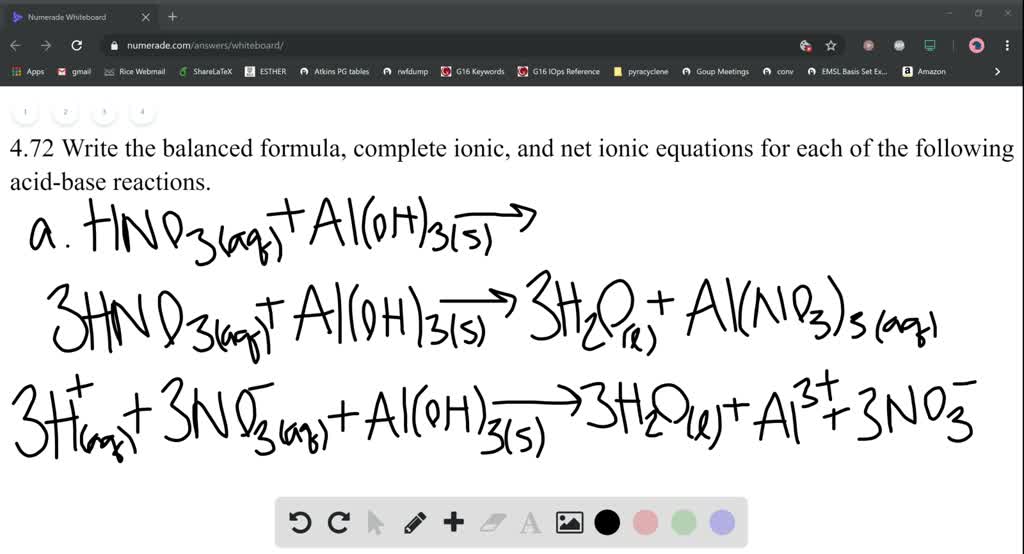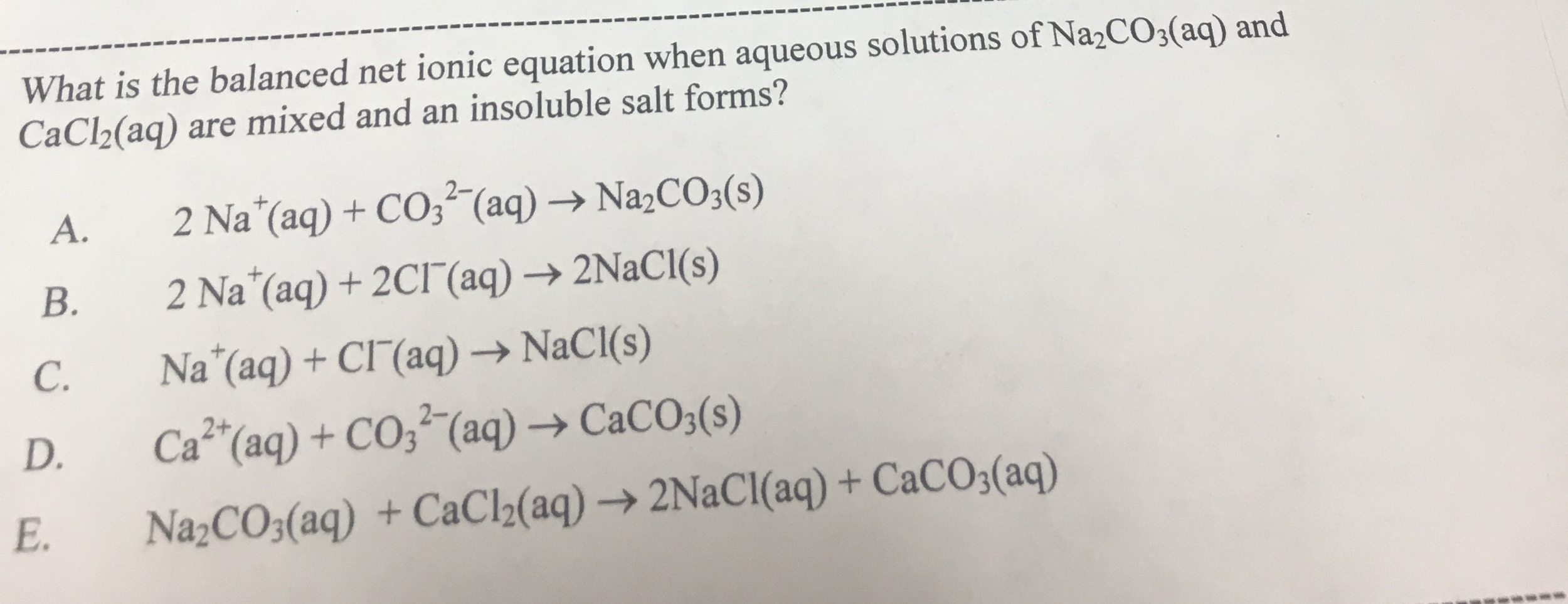
- #Balanced net ionic equation calculator pdf
- #Balanced net ionic equation calculator plus
- #Balanced net ionic equation calculator free
SO 4 -2, or denoted using the ‘tiny’ symbols, e.g. Note, that both indices and charges can be denoted in the source document using and html tags, e.g. All the spaces are ignored and symbol → is converted to =. When entering a chemical equation manually or pasting the copied equation, it converts automatically to the ‘normal’ form according to the above rules.
#Balanced net ionic equation calculator plus
The substances are separated by a plus sign (+). Reactants and products in a chemical reaction are separated by an equal sign (=).The method is modified for finding integer coefficients. Our stoichiometry calculator uses the Gauss-Jordan elimination algorithm for solving a set of linear equations. But in case of complex reactions involving many compounds, it is preferable to balance equations using algebraic methods, based on solving a set of linear equations. There are a number of methods for balancing chemical equations. In case of ionic reactions, the same electric charge must be present on both sides of the equation. Thus, each side of the equation must represent the same quantity of atoms of any chemical element. It’s important because in a chemical reaction, the quantity of each element does not change (the law of conservation of mass). This means looking for stoichiometric coefficients for the reactants and products. So, the first step in stoichiometry calculations is balancing chemical equations. Knowing the molecular weight of the compounds involved in the reaction, it is easy to find the mass of these compounds in grams. For any balanced chemical equation, whole numbers (stoichiometric coefficients) are used to show the amounts (in moles) of both the reactants and products. Stoichiometry is the field of chemistry that studies the relative amounts of reactants and products in chemical reactions. You can enter either the required number of moles or weight in grams for one of the compounds in the corresponding field, and then press the ‘Enter’ key, to compute new values for the rest of the compounds. The reaction stoichiometry is calculated automatically for a balanced equation, with the number of moles for the compounds being the same as the stoichiometric coefficients. In what follows is a more detailed syntax guide to our calculator. ) or the asterisk (*) precedes the water formula (e.g.H₂O) are supported and automatically converted to normal form.

H 2O) as well as denoted using the ‘tiny’ numbers, like ₂ or ₅, (e.g. Indices denoted using and html tags (e.g.

#Balanced net ionic equation calculator pdf
You can enter a chemical equation manually or paste the equation copied from a web page or text document (including DOC or PDF file). In case the original equation was unbalanced, the field with this equation is highlighted in light pink.
#Balanced net ionic equation calculator free
The equations may include free electrons and electrically charged molecules (ions) as well as hydrated compounds. Educators earn digital badges that certify knowledge, skill, and experience.This online Stoichiometry Calculator finds the stoichiometric coefficients to balance a given chemical equation and computes amounts of the reactants and products of the reaction, both in moles and grams.

Save time lesson planning by exploring our library of educator reviews to over 550,000 open educational resources (OER).Īn all-in-one learning object repository and curriculum management platform that combines Lesson Planet’s library of educator-reviews to open educational resources with district materials and district-licensed publisher content.Ī comprehensive online edtech PD solution for schools and districts. Timely and inspiring teaching ideas that you can apply in your classroom

Manage saved and uploaded resources and foldersīrowse educational resources by subject and topic Search reviewed educational resources by keyword, subject, grade, type, and more


 0 kommentar(er)
0 kommentar(er)
